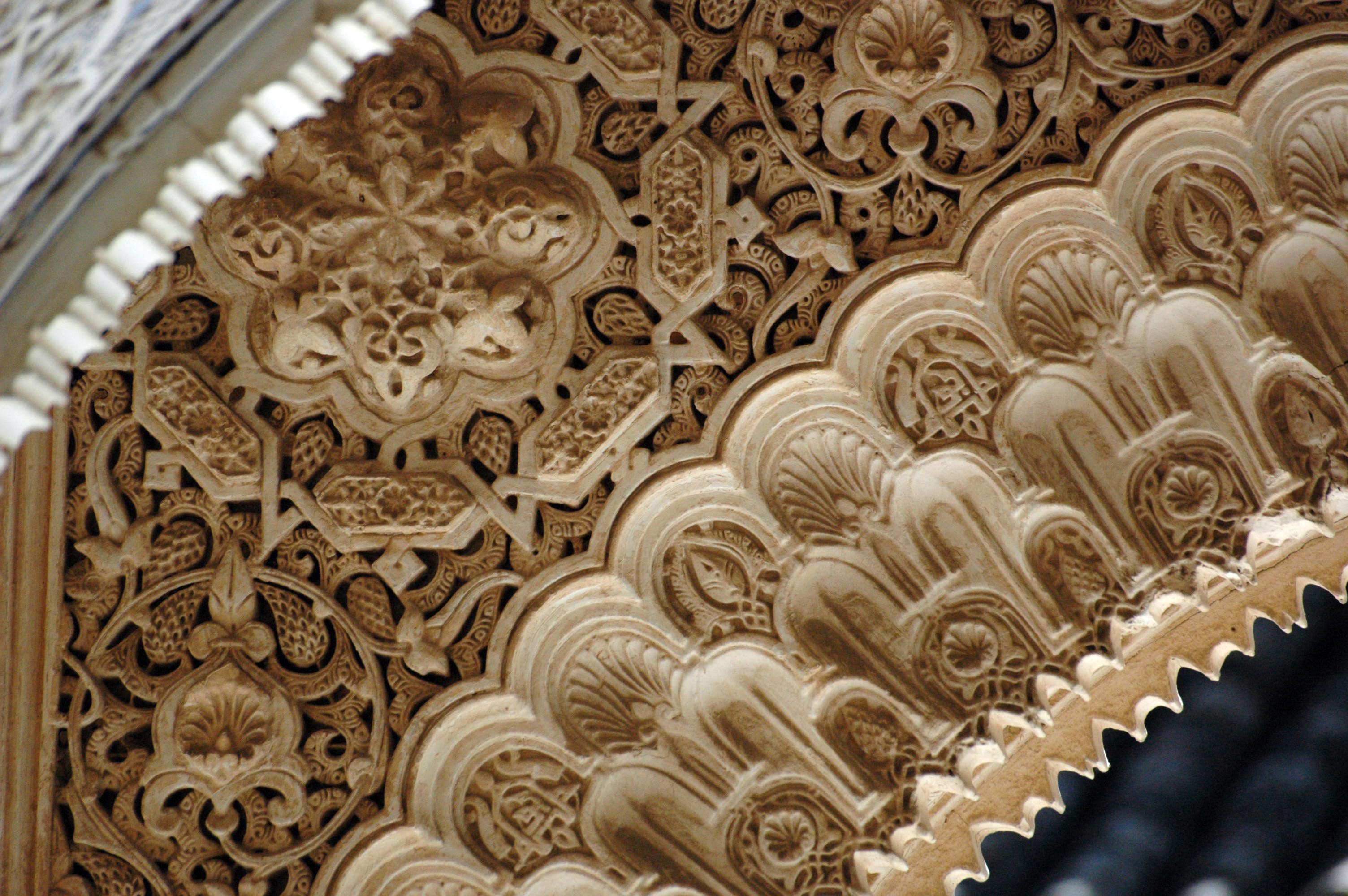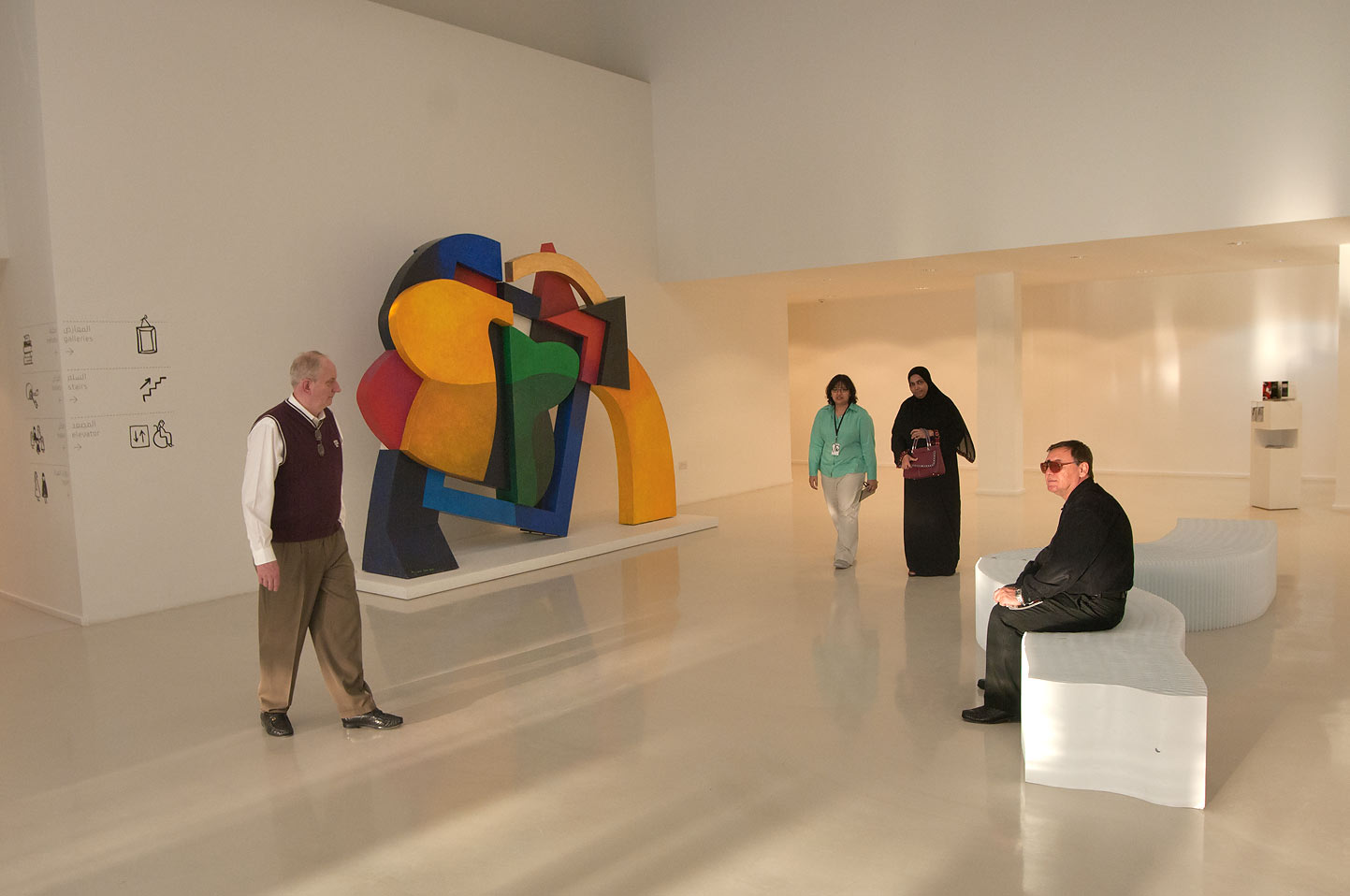|
Yousef Ahmad
Yousef Ahmad ( ar, يوسف أحمد; born 1955 in Doha, Qatar) is a Qatari artist, art adviser, collector, writer and educator in the field of art. He is a leading figure of Qatar's cultural development and regularly represent his country at international biennials and events. His art work has been displayed internationally. Early life and education Ahmad was born in Al Jasrah, a suburb of Doha, to a family of 3 sisters and 2 brothers. His mother was Maryam Al Baker, and his father, Ahmad Al-Homaid, worked as a pearl diver before joining Qatar Petroleum. By the time Ahmad finished primary school, the Ministry of Education began offering scholarships to Qatari artists to study abroad in Europe and the Middle East. He received a BA in Fine Art and Education from Helwan University in 1976. He studied under Gazbia Sirry during part of his tenure. He obtained a Master of Fine Arts degree from Mills College in California in 1982. Career as an artist His works have been described as ... [...More Info...] [...Related Items...] OR: [Wikipedia] [Google] [Baidu] |
Doha
Doha ( ar, الدوحة, ad-Dawḥa or ''ad-Dōḥa'') is the capital city and main financial hub of Qatar. Located on the Persian Gulf coast in the east of the country, north of Al Wakrah and south of Al Khor, it is home to most of the country's population. It is also Qatar's fastest growing city, with over 80% of the nation's population living in Doha or its surrounding suburbs. Doha was founded in the 1820s as an offshoot of Al Bidda. It was officially declared as the country's capital in 1971, when Qatar gained independence from being a British protectorate. As the commercial capital of Qatar and one of the emergent financial centers in the Middle East, Doha is considered a beta-level global city by the Globalization and World Cities Research Network. Doha accommodates Education City, an area devoted to research and education, and Hamad Medical City, an administrative area of medical care. It also includes Doha Sports City, or Aspire Zone, an international sport ... [...More Info...] [...Related Items...] OR: [Wikipedia] [Google] [Baidu] |
Collecting Practices Of The Al-Thani Family
The ruling family of Qatar, the House of Thani, is deeply involved in the field of art. For more than twenty years, some of its members have been accumulating numerous precious pieces of artwork. The project Qatar National Vision 2030 promotes the creation of new schools, new universities and new museums. The Cultural development, characterized by new museums and exhibitions, is therefore closely linked to the political motive of building a “knowledge-based economy” in Qatar by 2030. A journalist Barbara Pollack underlines the central role of the Al-Thani family while comparing Qatar's and Abu Dhabi’s cultural policies: "While Abu Dhabi is making a name for itself by building dramatic local satellites of the Louvres, the Guggenheim and the British Museum, Qatar's scheme of cultural nation building is much more homegrown, establishing its own museums rooted in the collections of its own royal family." Collecting strategy of the Al-Thani family Active members of the ... [...More Info...] [...Related Items...] OR: [Wikipedia] [Google] [Baidu] |
Qatari Contemporary Artists
Qatar (, ; ar, قطر, Qaṭar ; local vernacular pronunciation: ), officially the State of Qatar,) is a country in Western Asia. It occupies the Qatar Peninsula on the northeastern coast of the Arabian Peninsula in the Middle East; it shares its sole land border with Saudi Arabia to the south, with the rest of its territory surrounded by the Persian Gulf. The Gulf of Bahrain, an inlet of the Persian Gulf, separates Qatar from nearby Bahrain. The capital is Doha, home to over 80% of the country's inhabitants, and the land area is mostly made up of flat, low-lying desert. Qatar has been ruled as a hereditary monarchy by the House of Thani since Mohammed bin Thani signed a treaty with the British in 1868 that recognised its separate status. Following Ottoman rule, Qatar became a British protectorate in 1916, and gained independence in 1971. The current emir is Tamim bin Hamad Al Thani, who holds nearly all executive and legislative authority under the Constitution of Qat ... [...More Info...] [...Related Items...] OR: [Wikipedia] [Google] [Baidu] |
Living People
Related categories * :Year of birth missing (living people) / :Year of birth unknown * :Date of birth missing (living people) / :Date of birth unknown * :Place of birth missing (living people) / :Place of birth unknown * :Year of death missing / :Year of death unknown * :Date of death missing / :Date of death unknown * :Place of death missing / :Place of death unknown * :Missing middle or first names See also * :Dead people * :Template:L, which generates this category or death years, and birth year and sort keys. : {{DEFAULTSORT:Living people 21st-century people People by status ... [...More Info...] [...Related Items...] OR: [Wikipedia] [Google] [Baidu] |
Qatari Painters
Qatar (, ; ar, قطر, Qaṭar ; local vernacular pronunciation: ), officially the State of Qatar,) is a country in Western Asia. It occupies the Qatar Peninsula on the northeastern coast of the Arabian Peninsula in the Middle East; it shares its sole land border with Saudi Arabia to the south, with the rest of its territory surrounded by the Persian Gulf. The Gulf of Bahrain, an inlet of the Persian Gulf, separates Qatar from nearby Bahrain. The capital is Doha, home to over 80% of the country's inhabitants, and the land area is mostly made up of flat, low-lying desert. Qatar has been ruled as a hereditary monarchy by the House of Thani since Mohammed bin Thani signed a treaty with the British in 1868 that recognised its separate status. Following Ottoman rule, Qatar became a British protectorate in 1916, and gained independence in 1971. The current emir is Tamim bin Hamad Al Thani, who holds nearly all executive and legislative authority under the Constitution of Qat ... [...More Info...] [...Related Items...] OR: [Wikipedia] [Google] [Baidu] |
1955 Births
Events January * January 3 – José Ramón Guizado becomes president of Panama. * January 17 – , the first nuclear-powered submarine, puts to sea for the first time, from Groton, Connecticut. * January 18– 20 – Battle of Yijiangshan Islands: The Chinese Communist People's Liberation Army seizes the islands from the Republic of China (Taiwan). * January 22 – In the United States, The Pentagon announces a plan to develop intercontinental ballistic missiles (ICBMs), armed with nuclear weapons. * January 23 – The Sutton Coldfield rail crash kills 17, near Birmingham, England. * January 25 – The Presidium of the Supreme Soviet of the Soviet Union announces the end of the war between the USSR and Germany, which began during World War II in 1941. * January 28 – The United States Congress authorizes President Dwight D. Eisenhower to use force to protect Formosa from the People's Republic of China. February * February 10 – The United States Seven ... [...More Info...] [...Related Items...] OR: [Wikipedia] [Google] [Baidu] |
Islamic Calligraphy
Islamic calligraphy is the artistic practice of handwriting and calligraphy, in the languages which use Arabic alphabet or the alphabets derived from it. It includes Arabic, Persian, Ottoman, and Urdu calligraphy.Chapman, Caroline (2012). ''Encyclopedia of Islamic Art and Architecture'', It is known in Arabic as ''khatt Arabi'' (), which translates into Arabic line, design, or construction. The development of Islamic calligraphy is strongly tied to the Qur'an; chapters and excerpts from the Qur'an are a common and almost universal text upon which Islamic calligraphy is based. Although artistic depictions of people and animals are not explicitly forbidden by the Qur'an, pictures have traditionally been limited in Islamic books in order to avoid idolatry. Although some scholars dispute this, Kufic script was supposedly developed around the end of the 7th century in Kufa, Iraq, from which it takes its name. The style later developed into several varieties, including floral, ... [...More Info...] [...Related Items...] OR: [Wikipedia] [Google] [Baidu] |
Islamic Art
Islamic art is a part of Islamic culture and encompasses the visual arts produced since the 7th century CE by people who lived within territories inhabited or ruled by Muslim populations. Referring to characteristic traditions across a wide range of lands, periods, and genres, Islamic art is a concept used first by Western art historians since the late 19th century. Public Islamic art is traditionally non- representational, except for the widespread use of plant forms, usually in varieties of the spiralling arabesque. These are often combined with Islamic calligraphy, geometric patterns in styles that are typically found in a wide variety of media, from small objects in ceramic or metalwork to large decorative schemes in tiling on the outside and inside of large buildings, including mosques. Other forms of Islamic art include Islamic miniature painting, artefacts like Islamic glass or pottery, and textile arts, such as carpets and embroidery. The early developments of I ... [...More Info...] [...Related Items...] OR: [Wikipedia] [Google] [Baidu] |
Arab Museum Of Modern Art
Mathaf: Arab Museum of Modern Art (متحف : المتحف العربي للفن الحديث) in Doha, Qatar, offers an Arab perspective on modern and contemporary art and supports creativity, promotes dialogue and inspires new ideas. The museum boasts a collection of over 9,000 objects and also presents temporary exhibitions, library, and a robust educational program. Established in 2010, it is considered to be among the most important cultural attractions in the country. History ''Mathaf'' (متحف in Arabic) translates to "museum". The initial collection was gathered by Sheikh Hassan bin Mohammed Al Thani, and QMA provided the conditions of conservation as a public institution chaired by Sheikha Al-Mayassa Al Thani. Sheikh Hassan started building a collection in the early 1990s of art created by artists from the Arab world over the last 200 years with the aim of creating a museum that could capture and represent artists from this region. From the 1990s and early 2000s, t ... [...More Info...] [...Related Items...] OR: [Wikipedia] [Google] [Baidu] |
Hassan Bin Mohamed Bin Ali Al Thani
Sheikh Hassan bin Mohamed bin Ali Al Thani (born in 1960 in Doha) A prominent member of the Qatari royal family and the grandson of the former King of Qatar is a Qatari artist, collector, researcher, and educator in the field of modern art from the Arab world, India, and Asia. His multi-billion dollar art collection is one of the most valuable and extensive in the Middle East. He is Vice Chairperson of Qatar Museums Authority, Advisor for Cultural Affairs at Qatar Foundation and founder of Mathaf: Arab Museum of Modern Art. Family He is the son of Sheikh Muhammad bin Ali Al Thani and grandson of the former ruler of Qatar, the Emir Ali bin Abdulla Al Thani. He is married to Al-Anoud Khalid Al-Thani and is father of eight children, including Sheikha Maryam bint Hassan Al-Thani. Education Sheik Hassan studied "Art of the 20th Century" in a course at Qatar University in the mid-1980s. At that time, there was little information about Arab modern art, and there was not one single i ... [...More Info...] [...Related Items...] OR: [Wikipedia] [Google] [Baidu] |



